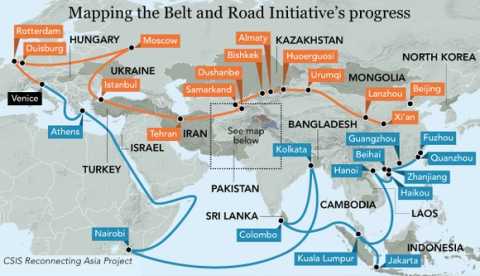
FARIDPUR, BANGLADESH, June 11 (Xinhua) -- With rail laying starting for the last section of Padma Bridge Railway Link Project (PBRLP), the construction of a mega Belt and Road Initiative (BRI) railway line has entered the final phase.
The project, with a total length of 172 kilometers, under construction by the China Railway Group Limited (CREC) and funded by the Export-Import Bank of China, held a track-laying ceremony from Bhanga to Jessore section on Saturday.
The project is being implemented in three sections, from Dhaka to Mawa, from Mawa to Bhanga and from Bhanga to Jessore.
"This project is very important for the Bangladesh railway," Nurul Islam Sujan, Bangladeshi Railway Minister said, noting that "we'll inaugurate the trial laying work from Bhanga to Jessore soon to make it suitable for train operation by June next year."
Already the test run of trains was conducted by the Bangladesh railway authorities on one of the rail link project's three sections from Bhanga to Mawa in the central Faridpur district in April.
The minister said, "We've already done a trial run from Bhanga to Mawa and will be able to do a trial run from Mawa to Kamalapur railway station (in Dhaka) in August."
The railway link will pass through the 9.8-km-long Padma Bridge about 40 km southwest of Dhaka, the longest in Bangladesh which was built by Chinese.
The history of crossing the Padma River between dozens of districts in southern Bangladesh and the capital of Dhaka only by ferries or boats ended in June last year as the bridge opened to traffic.
Moreover, after the PBRLP project is completed and opened to traffic, more than 20 districts in the south will be connected with the capital Dhaka, and the travel time from Dhaka to Jessore will be shortened from the original 10 hours to two hours.
"The Chinese company CREC is a very reputed company and their work is very much satisfactory," the minister told Xinhua on the spot, adding that "we hope that many other projects in the future the company will also participate."
The railway link, also a vital channel that connects the trans-Asian railway network, is expected to greatly promote regional connectivity and the economic development of Bangladesh.




